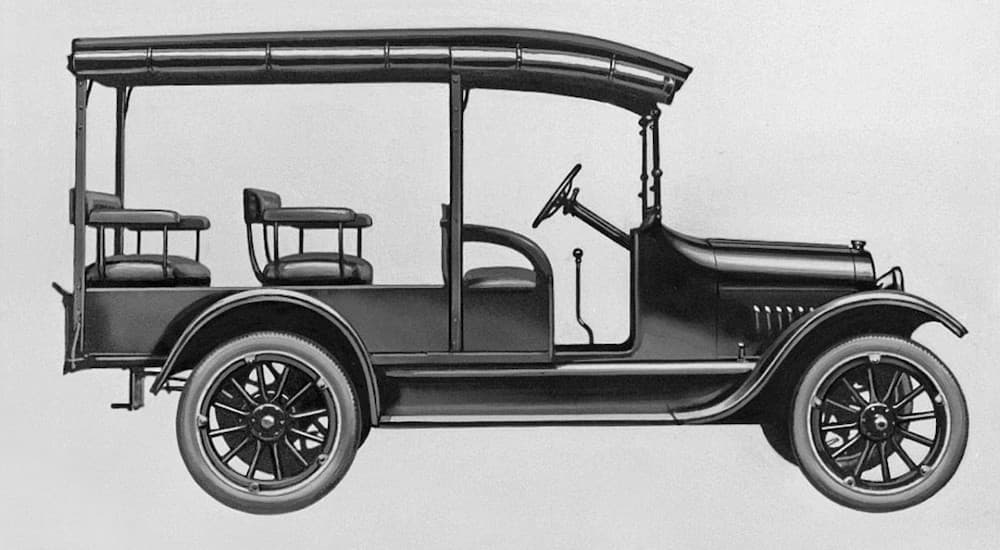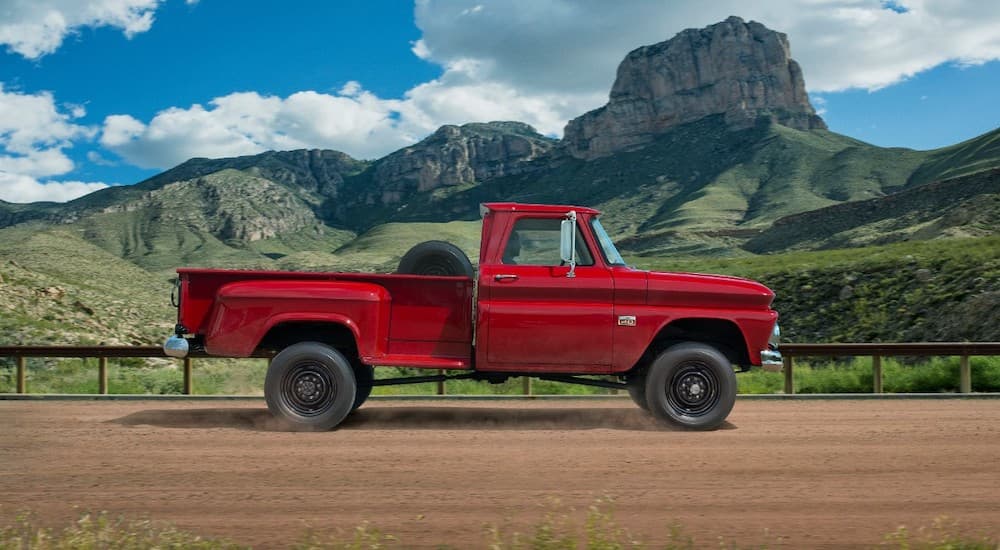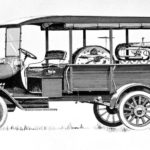These days, Chevy trucks are among the most powerful, reliable, and beloved pickups on the road; while the modern Chevy Silverado pickup might only go back about two decades, the history of Chevy trucks reaches back over 100 years. While you’re certainly not going to find a 1918 One-Ton pickup at your local used Chevy truck dealer, it’s still fun to take a look back at where these vehicles have come from.
Today, I thought it would be interesting to look at some key years for the history of Chevy trucks, rather than simply run down what’s happened over all of the last 100+ years. There have certainly been some important events between these dates, but these are the momentous ones that really changed things for what Chevrolet has to offer. In many ways, the history of Chevy trucks runs parallel to the history of the American auto industry and much of US history over the last hundred years.
1918 – The Chevy One-Ton Hits the Scene
This is where it all begins for Chevy trucks – though Chevrolet had been around since 1911, the first Chevy truck was introduced in 1918, the same year Chevy became a part of GM. There were two trucks available in that first year: the Chevy Model 490, a light vehicle with a half-ton rating, and the Chevrolet One-Ton. Both were available as a chassis only, which means that the buyer had to provide the cab and bed.

1929 – Introducing the Stovebolt Six
Some 11 years later, in 1929, Chevy revolutionized the truck market when they introduced the International Series AC Light Delivery truck, which featured an overhead-valve 6-cylinder engine nicknamed the “Stovebolt.” This engine was powerful, durable, reliable, and massively successful – plus, it allowed the One-Ton to be upgraded to a 1.5-ton truck. The first-generation Stovebolt was responsible for a lot of Chevy’s early success in the truck market and remained available until 1936.
1931 – The First Chevy Factory-Built Pickups
Remember how I said that the first Chevy trucks in 1918 were available as a chassis only? Well, that continued for more than a decade; the first fully factory-built Chevy trucks became available starting in 1931 with the Independence series trucks. Four different body styles were available at the time, and being able to buy a full truck from the factory, including the chassis, cab, and box, was a big deal.
1938 – Chevy Trucks Become Works of Art
Several years later, in 1938, Chevy went a step further by delivering a truck that wasn’t just fully factory-built but was designed with style in mind. The 1938 model was designed by Chevy’s newly established “Art and Color” department and wasn’t simply made to be a utilitarian vehicle for farmers. This was a truck with style and is considered by many to be the most attractive and impressive-looking truck of the early 20th Century.
1942 – Nothing to See Here
After the United States joined World War II in 1941, the production of civilian vehicles came so that factories could be used to build tanks, planes, and other war materiel. In other words, there weren’t any Chevy trucks made for civilian use during this time. This continued until the war ended in late 1945.
1946 – One-Year Wonders
A full lineup of trucks was manufactured by Chevy for 1946, but they’re honestly not much to talk about. It’s worth mentioning from a historical perspective because they represent a strange transitional period as the production of civilian vehicles started up again. That being said, they’re overshadowed by the models that were released the following year, and with good reason.
1947 – Introducing the Chevy 3100 Series
The precursor to the precursor of the modern Chevy truck, the Chevy Advance Design trucks were launched in 1947. Three different models were available: the 3100 half-ton, the 3600 three-quarter-ton, and the 3800 one-ton model. These trucks were all newly designed for 1947 and are some of the most recognizable pickups in truck history due to their bold, horizontal grille and a longer, wider cab that was more comfortable for three people.
1955 – The Task Force and Cameo Carrier
The Advance Design trucks were available until 1955, when Chevy released the Task Force trucks. These models had very pronounced design differences, including a wraparound windshield, concealed running boards, and a new style of headlights with a less pronounced grille than the Advance Design pickups. Part of the Task Force series was the Cameo Carrier, with car-inspired design and features that were the direct inspiration for the 1959 Chevy El Camino.
1960 – Along Came the Chevy C/K
In 1960, the first Chevy C/K trucks were introduced, which were the precursors to the Silverado and really paved the way for what has become the modern Chevy truck. The Chevy C10 was the half-ton, light-duty pickup in this series and incredibly popular in the 1960s. For these models, those designated “C” featured two-wheel drive, while those sold as “K” had four-wheel drive.
1967 – The Action Line
While the first generation of the C/K truck was quite popular, the Action Line or second generation was even more so. These trucks had numerous engines available for buyers to choose from and a number of interior upgrades over the first generation. With this update, what had been a simple work truck was revitalized and made into a far more attractive prospect for a wide range of buyers, really helping to create a whole generation of truck owners.
1973 – Making Trucks Heavy-Duty
The third generation for the C/K Series of trucks launched in 1973, and it had a number of upgrades that really set it apart from other trucks on the road. For one thing, this release saw the first heavy-duty trucks available on the market: the Chevy C30 One-Ton Dually, which was also the first dual-rear-wheel pickup available with a Crew Cab. This Crew Cab had seating for up to six people and made the third-generation C/K an even better work truck than ever before, with the ability to get more people to a job site.
1988 – A Fourth Generation for the C/K
In 1988, the fourth generation for the C/K trucks launched with a new naming structure, featuring the C/K 1500 as its signature light-duty model. This naming convention has, more or less, continued ever since, with the 1500, 2500, and 3500 designations still in use to indicate different levels of capability for the current Silverado trucks. With these pickups, Chevy introduced its Insta-Trac system that allowed for changing in or out of four-wheel drive while moving.
1999 – Introducing the Chevy Silverado
Now we come to the modern Chevy truck: in 1999, the all-new Silverado was introduced as the current Chevy pickup series. The “Silverado” name had been used as a trim level in some previous trucks, dating back to the 1970s, but 1999 marked its introduction as the main model name for Chevy’s lineup. This was launched alongside a sibling model, the GMC Sierra, using the same platform but with slightly different features.
2019 – The Latest Chevy Silverado
The most recent generation of the Chevy Silverado kicked off with the 2019 model year, though the heavy-duty models had to wait until 2020. These are the most powerful and impressive Chevy trucks to date, and they continue to build on the legacy of the last 100 years of ingenuity and design. When you look at these most recent Chevy trucks, you can still see traces of what came before: they certainly look different, but there is an attention to detail that is a hallmark of Chevy’s pickups. The powerful V8 engines you can find in the current Silverado might be quite a ways removed from the classic Stovebolt, but there’s the same desire to go beyond and offer something powerful and reliable for Chevy truck owners.





